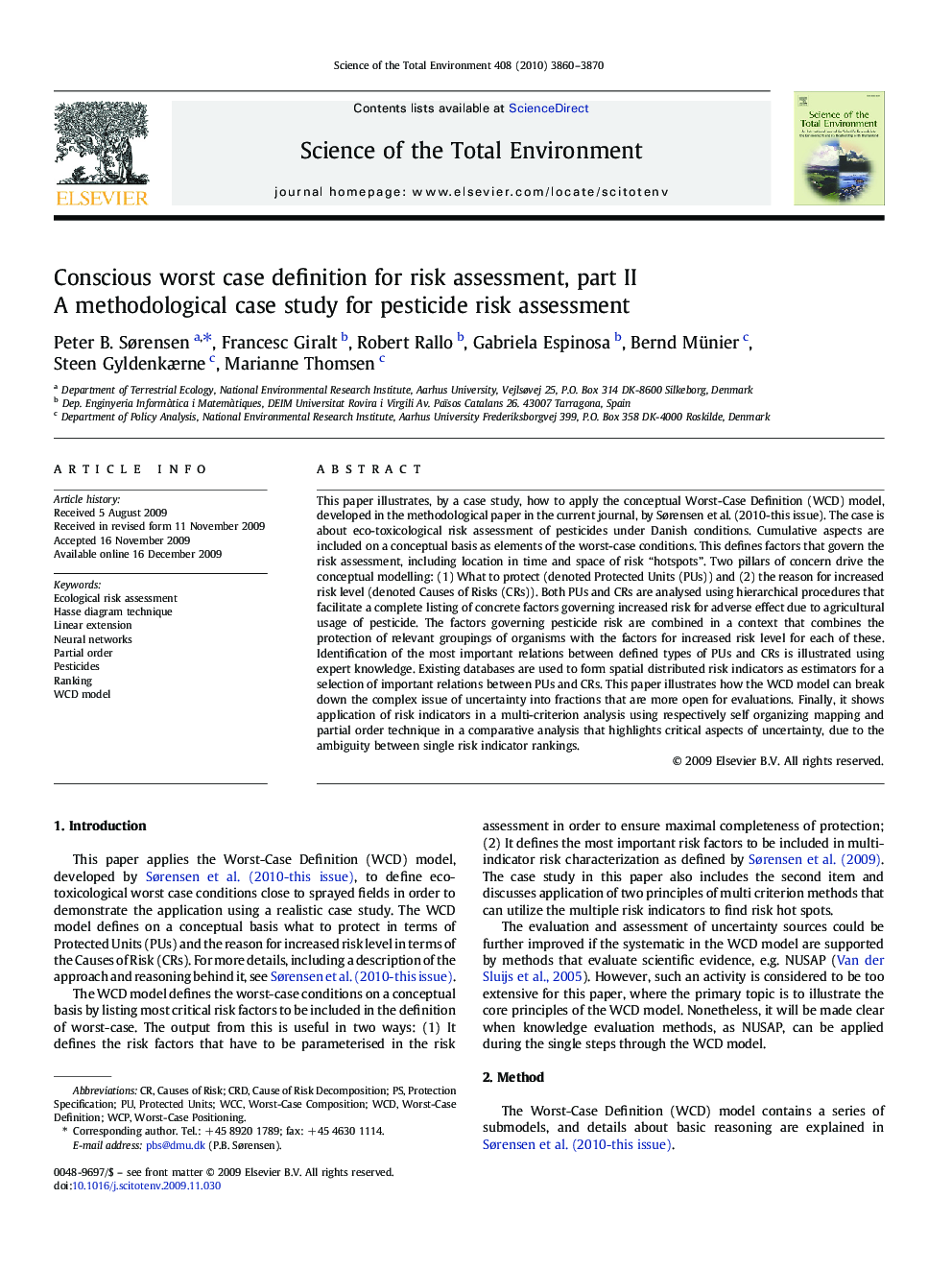| کد مقاله | کد نشریه | سال انتشار | مقاله انگلیسی | نسخه تمام متن |
|---|---|---|---|---|
| 4431014 | 1619868 | 2010 | 11 صفحه PDF | دانلود رایگان |

This paper illustrates, by a case study, how to apply the conceptual Worst-Case Definition (WCD) model, developed in the methodological paper in the current journal, by Sørensen et al. (2010-this issue). The case is about eco-toxicological risk assessment of pesticides under Danish conditions. Cumulative aspects are included on a conceptual basis as elements of the worst-case conditions. This defines factors that govern the risk assessment, including location in time and space of risk “hotspots”. Two pillars of concern drive the conceptual modelling: (1) What to protect (denoted Protected Units (PUs)) and (2) the reason for increased risk level (denoted Causes of Risks (CRs)). Both PUs and CRs are analysed using hierarchical procedures that facilitate a complete listing of concrete factors governing increased risk for adverse effect due to agricultural usage of pesticide. The factors governing pesticide risk are combined in a context that combines the protection of relevant groupings of organisms with the factors for increased risk level for each of these. Identification of the most important relations between defined types of PUs and CRs is illustrated using expert knowledge. Existing databases are used to form spatial distributed risk indicators as estimators for a selection of important relations between PUs and CRs. This paper illustrates how the WCD model can break down the complex issue of uncertainty into fractions that are more open for evaluations. Finally, it shows application of risk indicators in a multi-criterion analysis using respectively self organizing mapping and partial order technique in a comparative analysis that highlights critical aspects of uncertainty, due to the ambiguity between single risk indicator rankings.
Journal: Science of The Total Environment - Volume 408, Issue 18, 15 August 2010, Pages 3860–3870